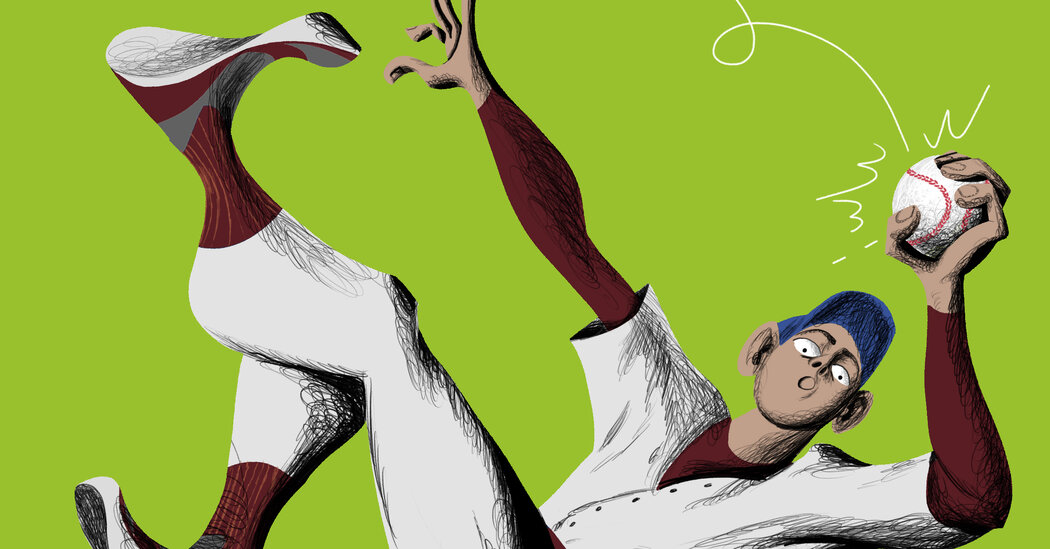On Friday, when the home plate umpire calls the first pitch of the 2025 World Series, savor it. This will be the last championship to be fully adjudicated by human beings.
The Automated Ball-Strike (A.B.S.) challenge system, known informally as the robot ump, is coming to your local major league ballpark on Opening Day in 2026. While human umpires will still call balls and strikes, the A.B.S. will allow teams to dispute calls, with the final judgment going to the computerized system.
Progress compels us to embrace technological accuracy and precision, promising a perfected version of what is to my mind the perfect sport. But baseball is a game of bad calls, bad luck, bad bounces, meteorological whim and unforeseen happenstance — all part of what makes it so perfect.
In a game where the best hitters fail two-thirds of the time, why should we expect umpires or outcomes to be perfect? The robot ump is the game’s attempt to limit deviations in strike zone calls — to always get things right. But baseball nurtures the expectation of the extraordinary, the deviations from the mean, and specializes in the delivery of it. What we remember, what we love, is Willie Mays, back turned to the infield, catching up to a ball hit over his head to the deepest recesses of the Polo Grounds. It’s Derek Jeter, bolting across the infield grass in Oakland to intercept a throw from the right-fielder and flipping the ball backhanded to his catcher in time to get the runner at the plate.
It’s not just the artistic anomalies that entrance us. Baseball is enlivened by its mistakes, its miscues, its mental lapses. Three days after Mookie Betts, the Dodgers shortstop, brilliantly thwarted a bunt by setting a defensive wheel play in motion with perfect timing, the Phillies relief pitcher Orion Kerkering fielded a comebacker and his synapses snapped. In the game’s final play, he hurled the ball high and wide over his catcher’s head rather than taking an easy inning-ending out at first base. Agony is also memorable.
When I asked Morgan Sword, M.L.B.’s executive vice president of baseball operations, about the possible implementation of fully automated balls and strikes, he told me many league executives were surprised by a loud negative response from the players. I wasn’t. In dugouts and front offices, I’ve heard the same lament, as players speak up for the human element of the game.
“We live in the era of the glorification of, ‘We can explain everything,’” Mr. Sword said wistfully. But baseball is inherently, mercifully, unsuited to that level of explication. Remember the midges that attacked Cleveland in 2007? Or the pebble in the infield dirt at Griffith Stadium that diverted two ground balls and made the Washington Senators 1924 world champions? Ballplayers know that control is an illusion.
“Our game is unpredictable in a good way,” the former Yankee manager Joe Torre told me. “The unexpected happens.”
A.B.S. has been tested since 2019, and the decision to implement it in the majors was inevitable. Technology creates its own imperative. If you build it, they will use it. Personally, I don’t mind the challenge system that will be introduced next year, which gives each team two chances per nine innings to ask for an automated second guess. But I fear a future in which baseball goes full robot-ump and the human element is further degraded. It will certainly be tricky for umpires to align the new computer-generated strike zone with their own judgment-based strike zone. Traditionally, the by-the-book definition of a strike zone is from the midpoint between a player’s shoulders and the top of his uniform pants to just beneath his kneecap — a decidedly unscientific designation, given to flexible interpretation.
The A.B.S. strike zone will be defined by a player’s official major league height as measured in spring training. The top of the zone will be set at 53.5 percent of a batter’s height and the bottom at 27 percent of his height. Players of equal height will have the essentially the same strike zone, no matter how they stand in the batter’s box or alter their stance from pitch to pitch. Let’s see: what is 53.5 percent of Giancarlo Stanton?
My personal data diva, Anette Hosoi, co-founder of the M.I.T. Sports Lab and professor of engineering and mathematics, had this to say: “The ability to adjust to nonuniformity is what great players do. The robo-umps are not more perfect. They are more accurate. The human judgment of umpires is not something that you should discard lightly. If we’re perfect all the time, the game becomes boring.” I asked her: “You mean the less perfect result makes for a better game?” And she said, “Yes.”
Former umpire Jim Joyce knows about this: He was the first-base umpire who botched the call on the last out of Armando Galarraga’s otherwise perfect game for the Detroit Tigers in 2010. The Tigers later sent the bag and the spikes Galarraga was wearing when he beat the runner to that bag to the Hall of Fame as a reminder of the human element of the game.
Galarraga knows he threw a perfect game. Joyce knew it too, mournfully and irrefutably. Galarraga lost his place on the official list of perfect game winners — but he earned an enduring reputation for uncommon grace when, in an act of consolation, he delivered the lineup card to Joyce at home plate the next day. A glorious brotherhood bloomed. The two men co-authored a book about the incident. They titled it “Nobody’s Perfect.”
Jane Leavy is the author of “Make Me Commissioner: I Know What’s Wrong with Baseball and How to Fix It,” along with biographies of Babe Ruth, Sandy Koufax and Mickey Mantle.
The Times is committed to publishing a diversity of letters to the editor. We’d like to hear what you think about this or any of our articles. Here are some tips. And here’s our email: [email protected].
Follow the New York Times Opinion section on Facebook, Instagram, TikTok, Bluesky, WhatsApp and Threads.
The post Cherish This World Series. It’s the Last One Entirely in Human Hands. appeared first on New York Times.




